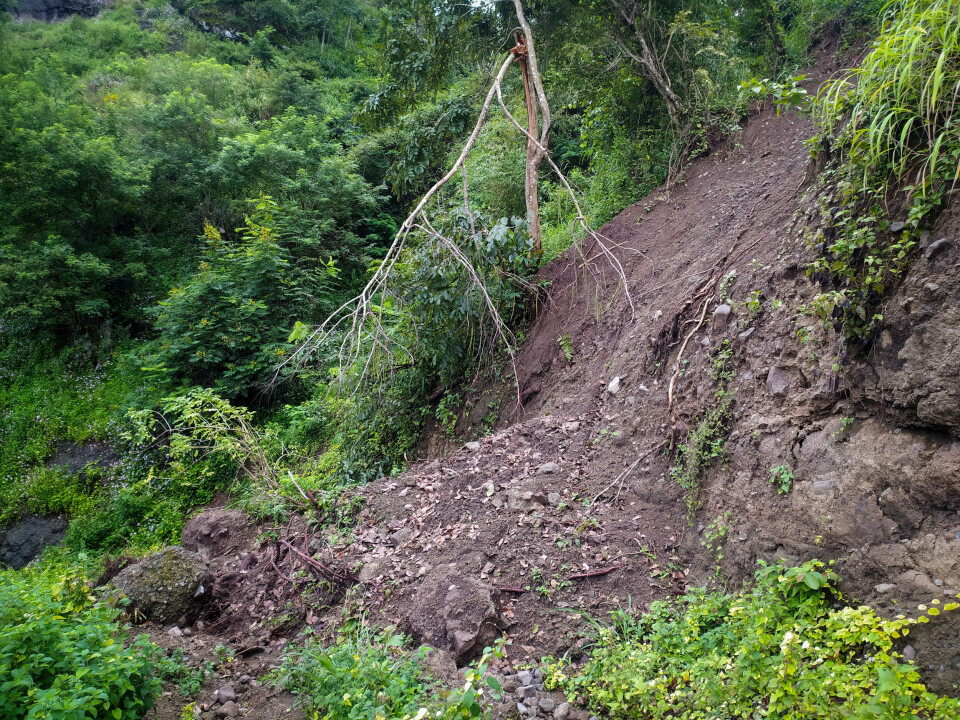-
How many Americans live in Paris - and where else are they choosing in France?
Over a quarter of all US nationals in France live in the capital city
-
Price rises for Netflix in France
The Standard (with ads) and Premium packages are increasing by €24 a year
-
Leclerc supermarkets to sell car fuel at cost price for Easter
The initiative will apply to diesel, petrol, and LPG
June flooding and mudslides recognised as natural disasters in France
An estimated 267,000 properties - many of which are in Dordogne - were damaged by storms beginning on June 18

The French government has published a list of 79 communes where a state of catastrophe naturelle (natural disaster) has been declared for storms at the end of June.
Only flooding and mudslides related to the storms are included in the decree, which was published on 11 August after being signed by ministers on 25 July.
People affected have a month from the publication date to lodge claims under catastrophe naturelle provisions with their insurers.
As well as damage from floods and landslides, heavy hail also caused extensive damage in some areas, including in the Dordogne town of Ribérac. However, hail damage is only covered by household or business insurance, not the catastrophe naturelle (Cat Nat) insurance.
What is catastrophe naturelle insurance?
Cat Nat insurance is a French peculiarity, where a special fund paid into insurance companies for all household and business insurance contracts, and which the government adds to, is unlocked after a catastrophe naturelle is confirmed by a government decree.
Read more: Vehicles, homes: claiming compensation for weather damage in France
Mayors have to ask for their communes to be declared to have suffered a catastrophe naturelle.
A Cat Nat decree allows insurers to help clients with extensive damage, without reducing too much the reserve funds all insurance companies have to keep.
With France seeing more and more catastrophe naturelle events due to climate change, the system is starting to creak, and the government and insurers are engaged in talks to try and find a way to improve it.
The storms at the end of June were exceptional in their intensity and duration, with most of France being affected in a week-long period which followed the first heatwave of the year.
If you have been impacted by these storms / hail storms we’d be interested in talking to you about how your insurance claims and repairs are going. Contact us via news@connexionfrance.com
Over a quarter million households affected
The French insurance industry trade body, France Assureurs, said in mid July that it estimated storms in the period June 18 to July 4 caused damage to 267,000 household properties, 337,000 cars, 16,000 business properties and 4,000 farms which will cost €2.4 billion to repair.
Weather experts said the difference between high ground temperatures and low-high altitude temperatures meant that hailstones “bounced” up and down in thunder clouds many times, getting bigger with every bounce, before falling to the ground.
Damage was highly localised, with some houses having roof tiles smashed by hail stones the size of oranges, while their neighbours were untouched.
The hail was sometimes accompanied by torrential rain, and with ditches blocked by hail, water and mud flooded many areas which do not normally experience flooding.
Flash floods also hit many small streams, turning them into raging torrents, causing damage to properties near them.
Dordogne was one of the most affected areas and 25 of the 79 communes included in the decree, including Ribérac, are in the department.
A full list of the communes included in the decree can be found here.
Hail damage not included in catastrophe naturelle cover
In its notes accompanying the decree, the government’s legislative publication Le Journal officiel states that hail and wind damage are excluded from the Nat Cat decree.
Instead, they are covered by the tempête, neige et grêle (storms, snow and hail) sections of standard household contracts.
Also included in the decree was the official announcement that 281 mainly northern communes who were asking for catastrophe naturelle declarations had their requests refused.
Many made the claims after fierce winter storms in February and March, but the government decided that the damage caused did not meet standards based on how exceptional the storm damage was.
Related articles
Second home hotspots, pergolas, cracks: Five French property updates
Ten million homes in France risk structural cracks after heatwaves
Dordogne storm victims call for official natural disaster recognition
























